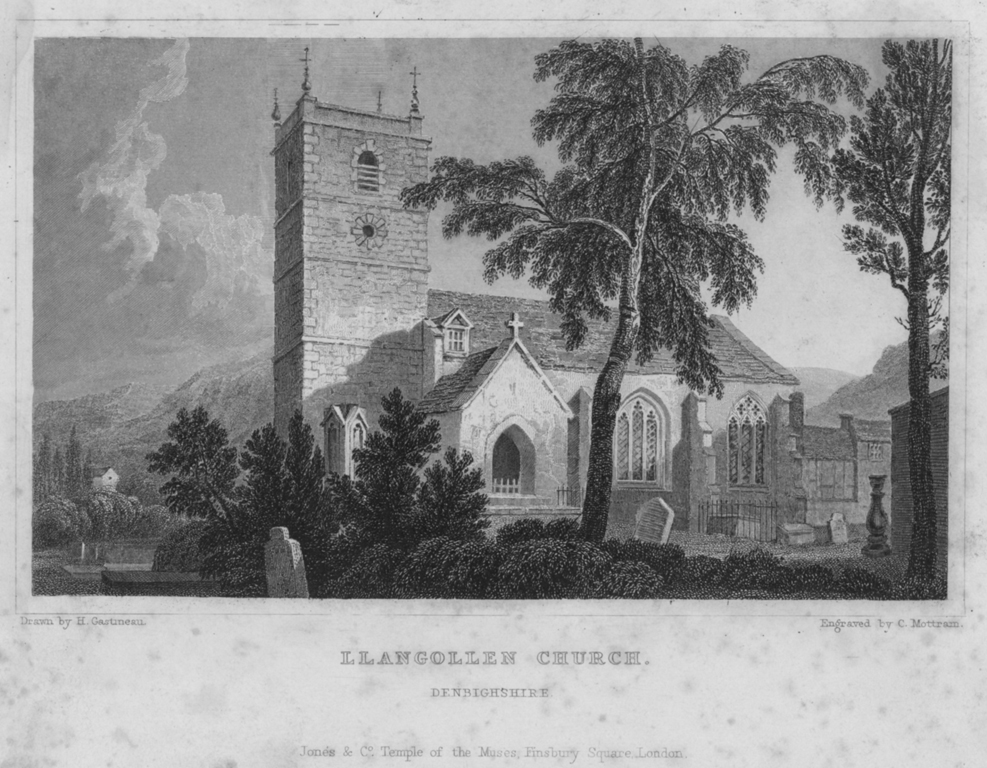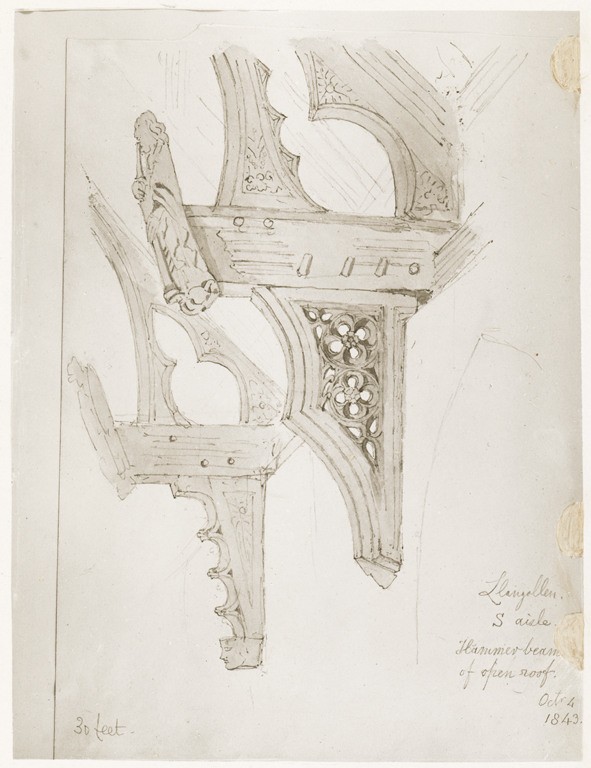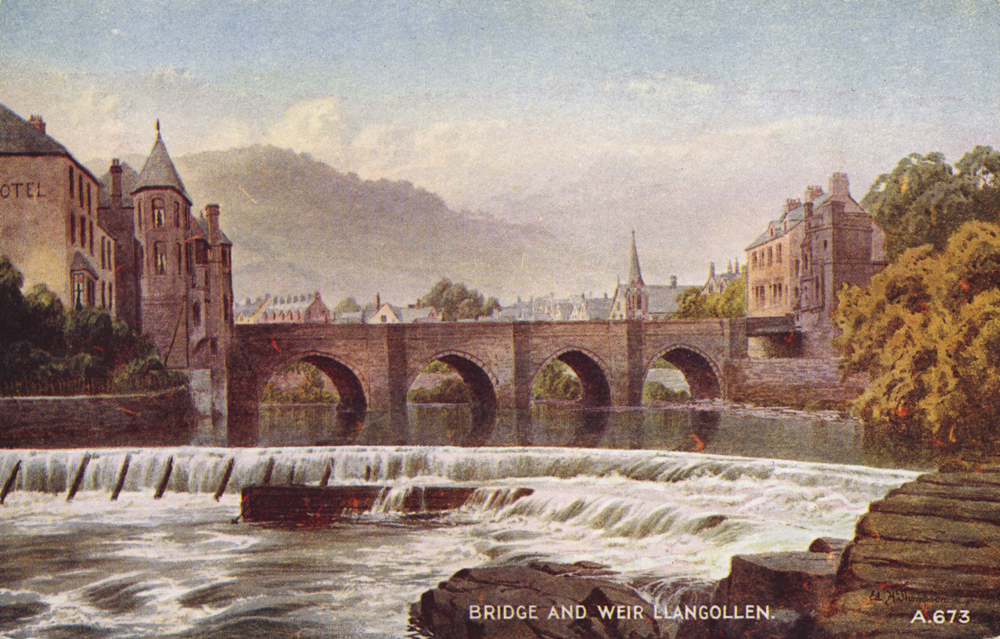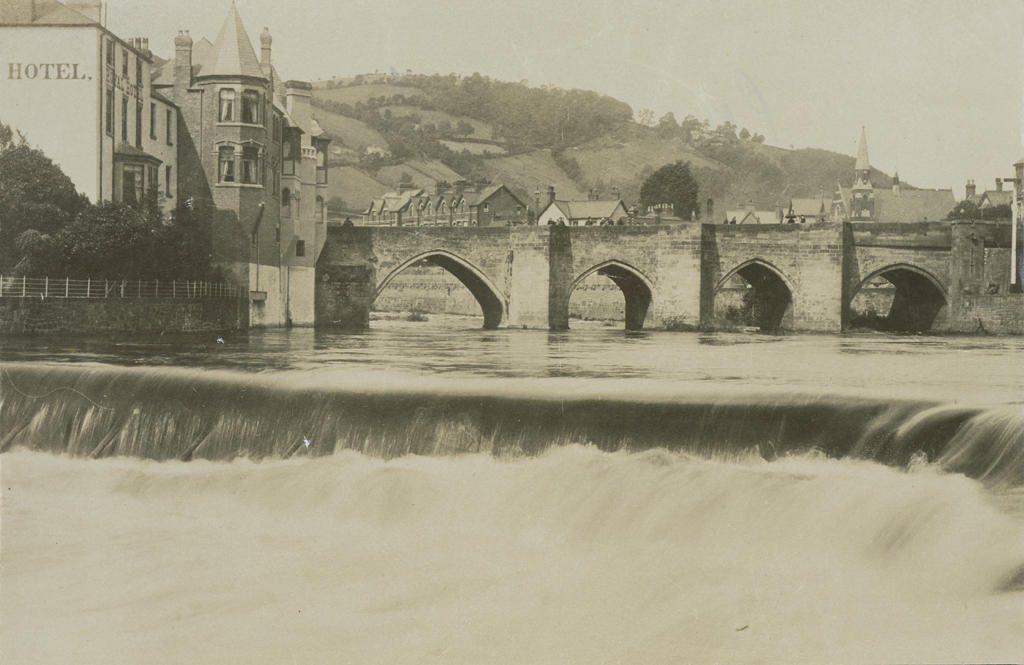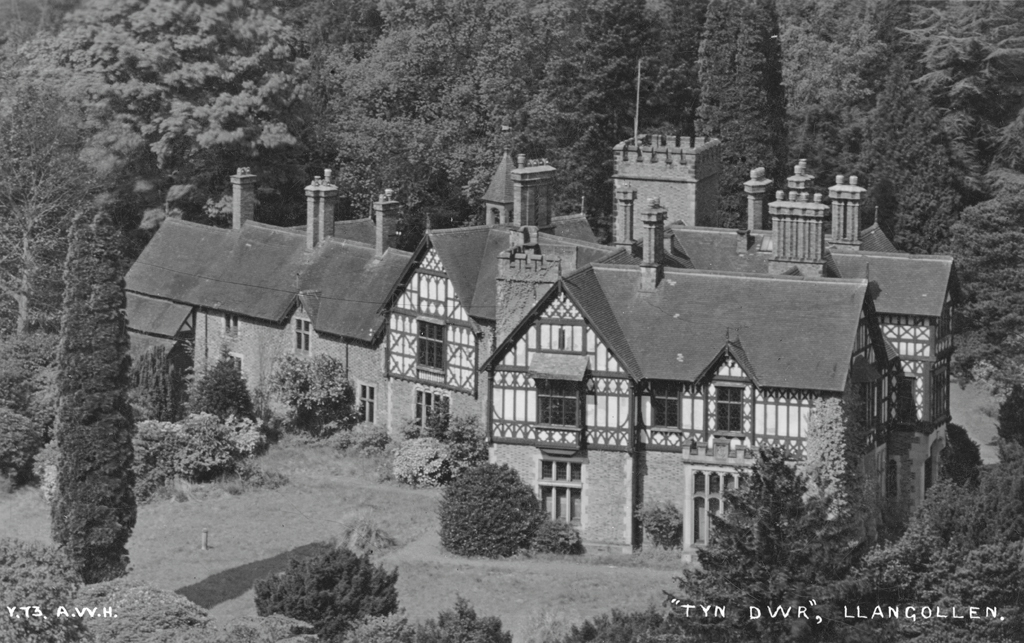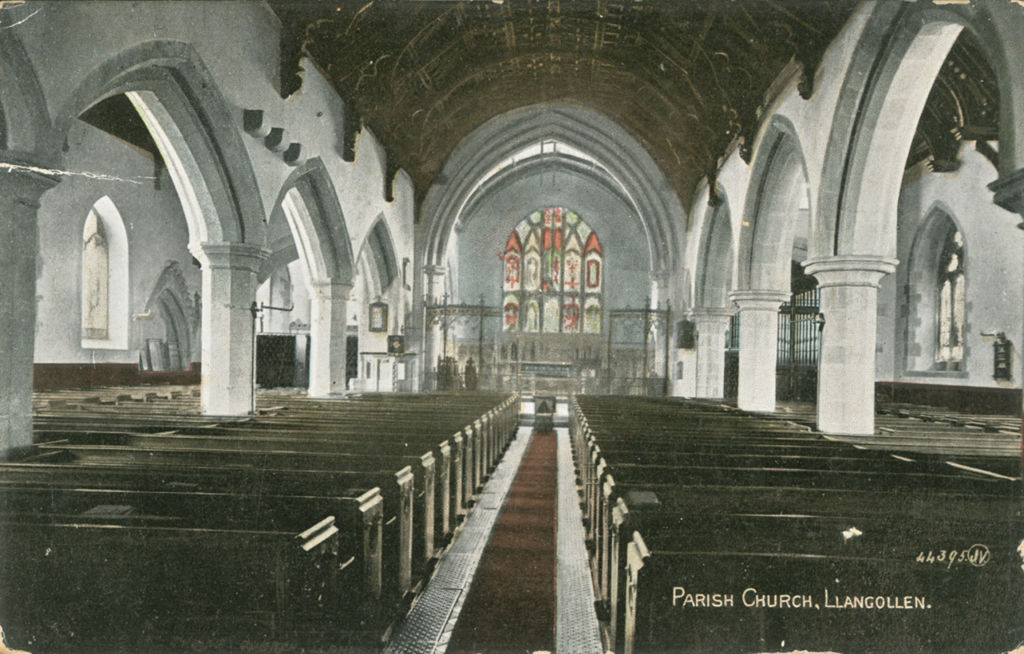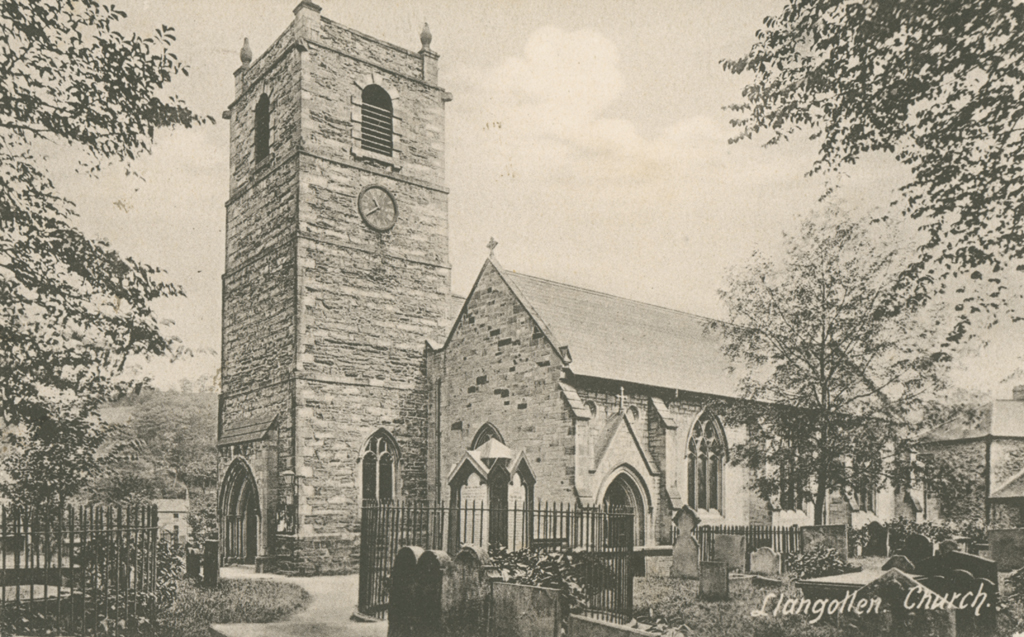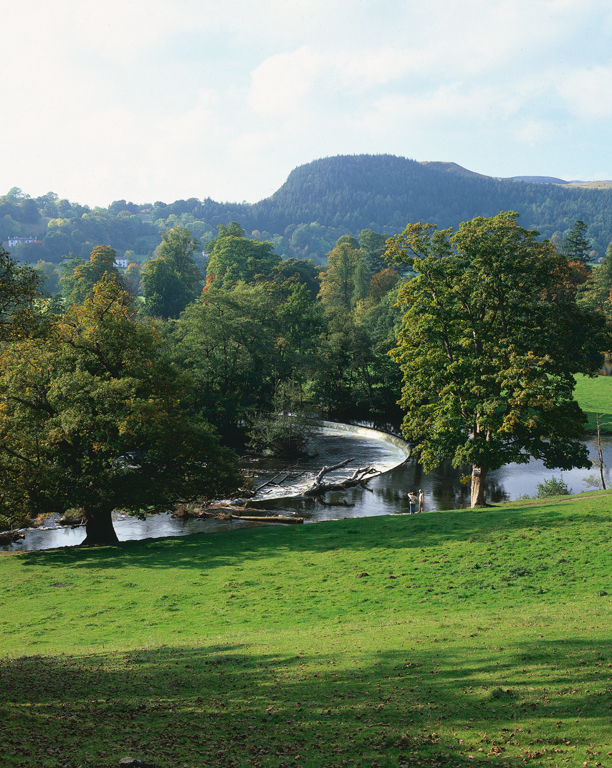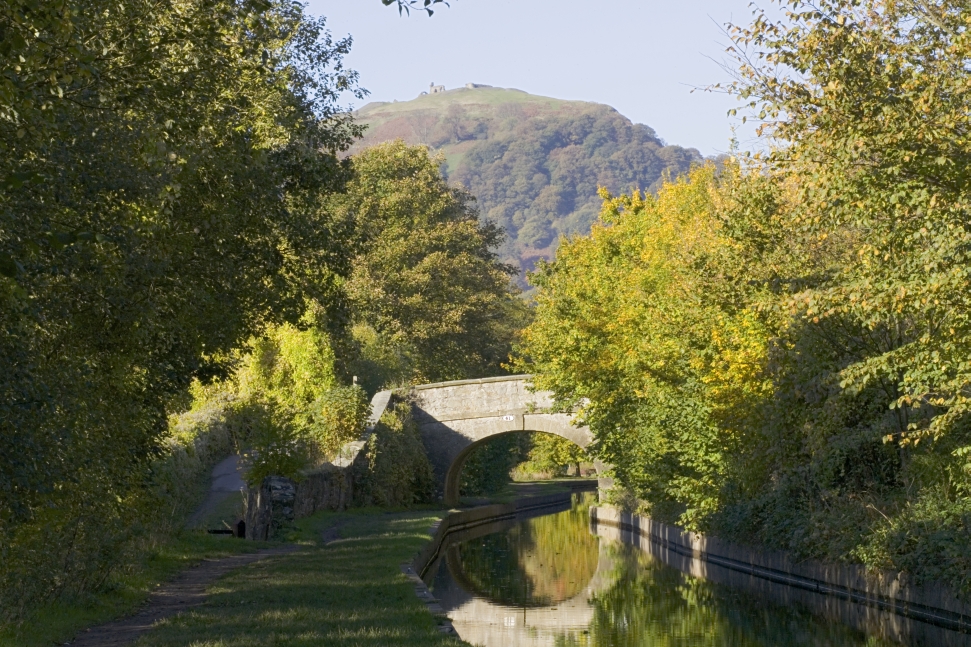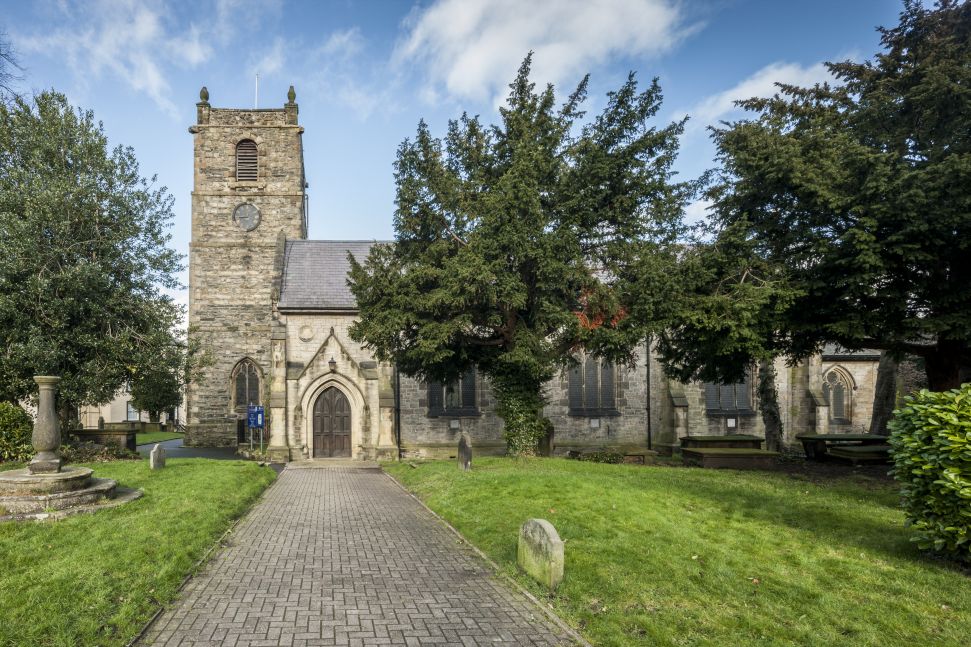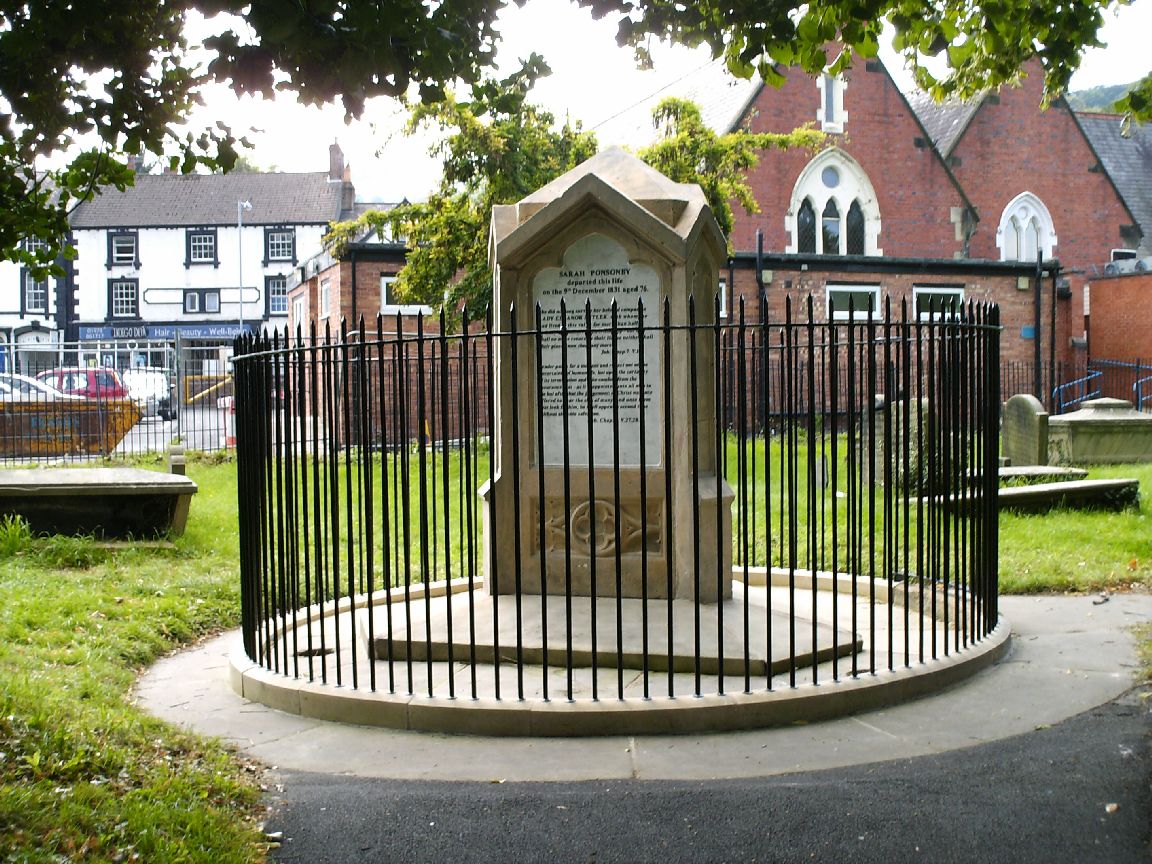Llangollen - Overview
Llangollen is a small town in Denbighshire and takes its name from St Collen, who allegedly established a church here on the banks of the river Dee in the sixth-century. The town’s great sixteenth-century stone bridge across the river is one of the ancient Seven Wonders of Wales.
The A5 road through Llangollen developed out of the historical main road through north Wales. In 1815 an Act of Parliament authorised civil engineer Thomas Telford to undertake the modernisation of the road as it formed the chief postal communication route between Ireland, the Welsh harbour town Holyhead and London. For this reason, Telford kept the inclination of the road exceedingly low so that the mail coaches could travel without much delay. The modernisation of the road also meant it was easier and quicker for visitors to reach Llangollen. In 1828, Prince Herman von Pückler-Muskau praised the beauty of the Vale of Llangollen and visited the famous Ladies, Sarah Ponsonby and Eleanor Butler. A year later, Felix Mendelssohn Bartholdy despaired over hearing Beethoven’s songs played badly by a harpist at his hotel, before exploring the nearby surroundings, Castell Dinas Bran and Valle Crucis Abbey.
One of the main cultural attractions of Llangollen today is the annual International Eisteddfod, an amicable competition celebrating song and dance from around the world. The festival dates back to 1943 with international visitors travelling to the National Eisteddfod held in Bangor that year. Since 1947, the six-day long International Eisteddfod has been held in Llangollen and draws thousands of singers from around the world into the town.
Accounts of Travel
Briefe eines Verstorbenen, 1828
Hermann von Pückler-Muskau (1785 – 1871)
Das Bergstädtchen Llangollen gewährt nach einigen Stunden ein köstliches Ruheplätzchen, und ist mit Recht seiner lieblichen Gegend wegen so häufig besucht. Die schönste Aussicht hat man vom Kirchhofe, neben dem Gasthaus, wo ich vor einer halben Stunde, auf ein Grabmonument geklettert, stand, und mich, mit herzlicher Frömmigkeit, glückselig des schönen Anblicks freute. Unter mir blühte ein terrassenförmiges Gärtchen mit Wein, Jelänger-jelieber, Rosen und hundert bunten Blumen, die wie zum Bade bis an den Rand des schäumenden Flusses hinabstiegen; rechts verfolgte mein Blick die emsig murmelnden gekräuselten Wellen zwischen dicht herabhängendem Gebüsch; vor mir erhob sich eine doppelte Waldregion, durch Wiesenflächen mit weidenden Kühen abgetheilt, und über alles hoch oben die kahle conische Spitze eines vielleicht ehemaligen Vulkans, den jetzt die düstern Ruinen der uralten welschen Burg Castel Dinas Bran, zu deutsch: die Krähen-Veste, wie eine Mauerkrone, decken; links zerstreuen sich die steinernen Häuser des Städtchens im Thal, und neben einer malerischen Brücke bildet der Fluß hier einen ansehnlichen Wasserfall; dicht hinter diesen angelehnt aber stellen sich, gleich Riesenwächtern, drei große Bergkolosse majestätisch vor, und verschließen dem Auge alle fernern Geheimnisse der wunderbaren Gegend.
A few miles further on, the little town of Llangollen offers a delightful resting-place, and is deservedly much resorted to.
There is a beautiful view from the churchyard near the inn: here I climbed upon a tomb, and stood for half an hour enjoying with deep and grateful delight the beauties so richly spread before me. Immediately below me bloomed a terraced garden, filled with vine, honey-suckle, rose, and a hundred gay flowers, which descended to the very edge of the foaming stream. On the right hand, my eye followed the crisped waves in their restless murmuring course through the overhanging thicket; before me rose two lines of wood, divided by a strip of meadow-land filled with grazing cattle; and high above all, rose the bare conical peak of a mountain crowned by the ruins of the old Welsh castle Dinas Brân, or the Crow’s Fortress. On the left, the stone houses of the town lie scattered along the valley; the river forms a considerable waterfall near the picturesque bridge, while three colossal rocks rise immediately behind it like giant guards, and shut out all the more distant wonders of this enchanting region.
(Tour in England, Ireland, and France, in the Years 1828 & 1829. With Remarks on the Manners and Customs of the Inhabitants, and Anecdotes of Distinguished Public Characters. In a Series of Letters. By a German Prince. Ed. B –. 4 vols. London: Effingham Wilson, 1832)
"Wales und die Waliser", 1856
Julius Rodenberg (1831 – 1914)
Einen ganz andern Charakter, südlicher in seinen Farben, weicher in seien Formen, hat das Thal und die Stadt Llangollen .... Aus dem Felsenpaß der Snowdonia tritt man hier in das lieblichste Idyll; – das üppich bewaldete Pengwern- und Berwyn-Gebirge, in weichem Schwunge von Kuppe zu Kuppe steigend, umschließt das Thal, das wohl mit Recht „das süßeste der Thäler“ und „das glückliche Thal“ genannt wird. Hier ladet Alles zum Frieden, zu genießender Ruhe, zu beschaulicher Einkehr in sich selber ein. Es ist eine wunderbare Harmonie in diesem Gedichte der Natur, eine sanfte Musik der Landschaft – eine frauenhafte Weichheit. Und wie sonderbar, daß es auch nur Frauen sind, an deren Namen und Andenken sich die Traditionen von Llangollen knüpfen! Die eigenthümlichsten dieser Frauengestalten, deren Bilder noch heute zu den Penaten dieses glücklichen Ortes gehören, sind die unter dem Namen der „Damen von Llangollen“ („the ladies of Llangollen“) ihrer Zeit hochgefeierten Lady Eleanor Butler und Miß Ponsonby, die sich um das Jahr 1778 hier ansiedelten und bis tief in unser Jahrhundert hinein in einem reizenden Häuschen, das man noch heute zeigt, ein Leben lebten, welches ganz und ausschließlich der treuesten Freundschaft gewidmet war.
The valley and town of Llangollen have an entirely different character, more southern in its colours, softer in its shapes .... From the rocky pass of Snowdonia one enters here the loveliest of idylls; – the densely wooded Pengwern and Berwyn mountains, rising in soft momentum from summit to summit, encircle the valley which is perhaps most aptly named ‘the sweetest of valleys’ and ‘the happy valley’. Everything here invites peace, encourages delightful rest and self-communion. There is a wonderful harmony in this poem of nature, a soft music in the landscape – a feminine softness. And isn’t it strange that it is women only to whose names and memory Llangollen attaches its traditions! The most singular of these female characters, whose images still belong to the penates of this happy place, are Lady Eleanor Butler and Miss Ponsonby, celebrated in their own time under the name of ‘the Ladies of Llangollen’, who settled here around the year 1778 and lived well into our century in a delightful cottage, which can still be visited today, dedicating their lives entirely and completely to the most dedicated friendship.
Mémoires inédits sur le XVIIIe siècle et la Révolution française, c. 1790s
Stéphanie Félicité du Crest de Saint-Aubin, Comtesse de Genlis (1746 – 1830)
Ce village [Llangollen] n’a pas la riche apparence des autres villages de l’Angleterre, mais rien n’égale la propreté de l’intérieur des maisons, et c’est là, parmi les paysans, la véritable preuve de l’aisance. Langollen entouré d’ombrages et de prairies délicieuses, par la fraîcheur de leur verdure, est situé au pied de la montagne des deux amies [les dames de Llangollen], qui forme là une majestueuse pyramide couverte d’arbres et de fleurs.
This village [Llangollen] does not have the rich appearance of other villages in England, but nothing equals the cleanliness of the insides of the houses, and it is there, among peasants, the real proof of affluence is seen. Llangollen, surrounded by shade and delicious meadows, by the freshness of their green, is situated at the foot of the two friends‘ [the Ladies of Llangollen] mountain, which forms there a majestic pyramid covered in trees and flowers.
"En Angleterre", c. 1880s
Marie-Anne de Bovet (1855 – 19??)
Llangollen aussi est une station d’été en pleine montagne, au fond d’un étroit et mélancolique ravin où coule la Dee, se dirigeant vers Chester, traversée par un curieux vieux pont fait de trois arches en ogive et une en plein cintre. Cette petite ville de cinq mille âmes, irrégulière et toute noire d’ardoises, a été rendue célèbre par « les dames de Llangollen », Lady Eleanor Butler et miss Ponsonby, qui pour faire les hommes et le mariage, disaient-elles, s’y sont retirées du monde et y ont vécu plus d’un demi-siècle dans une solitude absolue, sans en jamais sortir et y jamais recevoir que des lettres de leur amis de régions civilisées. [Continues to describe the ladies, then moves on to describe house] la petite maison, d’ailleurs fort curieuse avec ses boiseries sculptées en chêne noir, fragments disparates de portes et de bahuts, de bois de lit et de battants d’armoire, de huches de cuisine et de retables d’église, est montrée aux étrangers avec autant de componction que s’il s’agissait d’un pélerinage à la demeure de deux saintes.
Llangollen is also a summer destination right up in the mountains at the far end of a narrow and melancholic ravine where the Dee flows, on its way to Chester, crossed by a strange old bridge with three pointed arches and one rounded arch. This little town of five thousand souls, irregular and all black with slate, has been made famous by the ‘Ladies of Llangollen’, Lady Eleanor Butler and Miss Ponsonby, who in order to do men and marriage, they said, retired there from the world and have lived there more than half a century in the most absolute solitude, without ever leaving it and never receiving there more than the letters of friends living in civilized places. [T]he little house, really remarkable with its carvings in black oak, assorted parts of doors and chests, of bed wood and wardrobe doors, of kitchen chests and church altarpieces, is shown to strangers/ foreigners with as much seriousness as if it were a matter of a pilgrimage to the dwelling place of two Saints.

